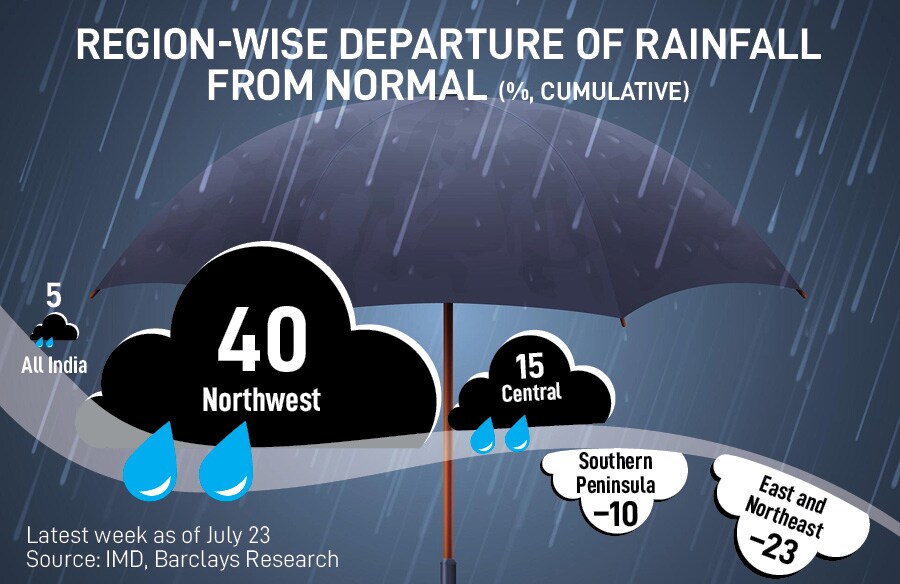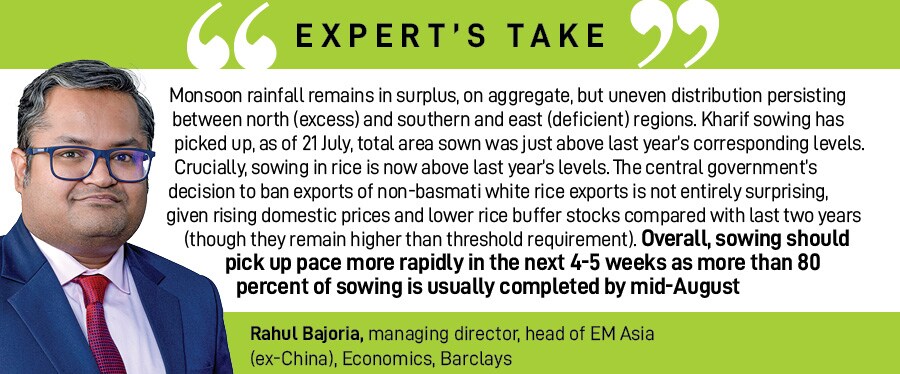
Rain Watch for July 20-26: Surplus monsoon, sowing of rice improves
Forbes India's Rain Watch series simplifies rainfall status, water reservoir levels and sowing pattern of kharif crops, using data analysis by Barclays
 Image: Sunil Ghosh/Hindustan Times via Getty Images
Image: Sunil Ghosh/Hindustan Times via Getty Images
As India entered the eighth week of monsoon in the period July 20-26, monsoon rainfall was in surplus with geographical distribution of rains still uneven over the past week.
While the intensity of excess rains over the northwest region reduced providing some relief of flooded areas, the southern and eastern regions continued to face deficient rains. Within central region, areas in Maharashtra, which had received deficient rainfall until the week before, witnessed ‘large excess’ rains last week.

Till July 23 July, India’s aggregate monsoon rainfall was at five percent higher above long period average (LPA), based on Indian Meteorological Department (IMD) data analysis by Barclays. Monsoon rainfall within plus or minus 10 percent of the LPA is classified as ‘normal’ by IMD. Region-wise, northwest and central have recorded higher rainfall, while southern peninsula and eastern region rainfall are still in the deficient zone.








